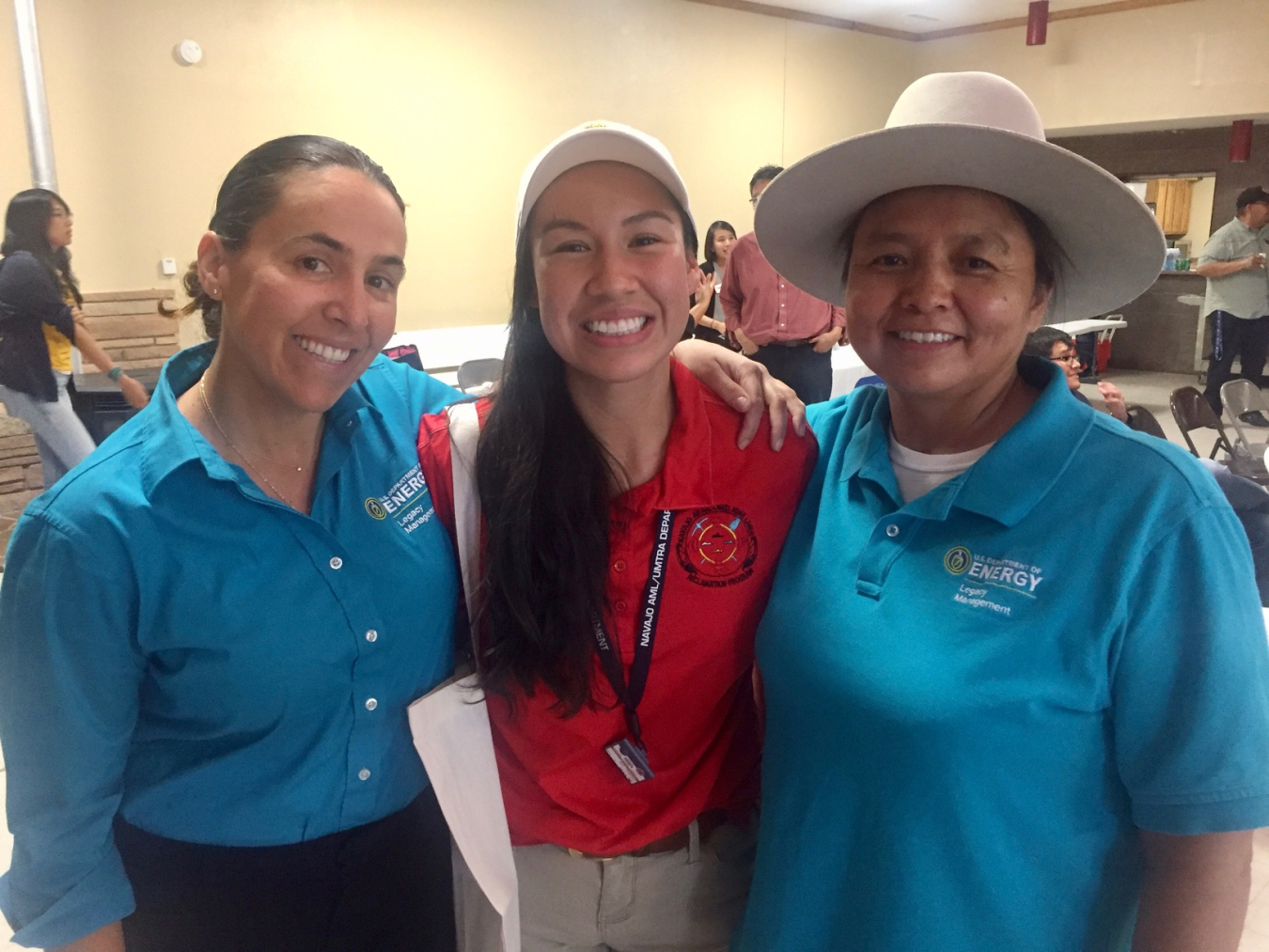LM relies on partnerships with the Navajo and Hopi governments. One such partnership is through the Navajo Nation Abandoned Mine Lands (NAML) program.
May 7, 2020The Navajo Nation extends over 26,000 square miles and is the largest sovereign nation in the United States. Its impressive size occupies all of northeastern Arizona, as well as parts of southeastern Utah and northwestern New Mexico.
The legacy of mining on the Navajo Nation dates to the late 1800s and early 1900s. Mining activities included uranium, vanadium, copper, coal, sand, and gravel. The rush to build nuclear weapons — in order to fight World War II and the Cold War — brought an unprecedented need for the exploration, mining, and milling of uranium. Between 1944 and 1986, nearly 4 million tons of uranium ore were extracted from the Navajo Nation under leases with the tribal government.
Years later, the U.S. Department of Energy (DOE) remediated four uranium-processing sites on the Navajo Nation pursuant to the Uranium Mill Tailings Radiation Control Act (UMTRCA), passed by Congress in 1978, and the subsequent Uranium Mill Tailings Remedial Action (UMTRA) program initiated by the Department. The four sites are in Shiprock, New Mexico; Mexican Hat, Utah; and Tuba City and Monument Valley, Arizona. After remediation was complete, long-term monitoring of the sites became the responsibility of DOE Office of Legacy Management (LM).

During an outreach event at the Cove Chapter House in July 2019, pictured from left to right: Karen Edson, LM communications and public affairs; Joni Tallbull, Navajo Nation Division of Natural Resources UMTRA/AML; and Angelita Denny, LM site lead.
LM relies on partnerships with the Navajo and Hopi governments. One such partnership is through the Navajo Nation Abandoned Mine Lands (NAML) program. The collaborative spirit is key to the success of LM on the Navajo Nation. Established in 1988, the NAML Reclamation Department directs this program. This tribal department works closely with LM and its contractors to monitor daily activities occurring on the four sites, provides input on site work and assessments, and meets quarterly with LM and Hopi counterparts to provide updates and share information.
Some of the most rewarding work is performed side-by-side at outreach activities. These activities include monthly Chapter House meetings, STEM outreach programming, Navajo Nation fairs, and other community events.
“Our work on the Navajo Nation is enhanced by the strong partnership that with have with NAML and the UMTRA program,” says Mark Kautsky, UMTRCA program manager for LM. “Their insight and expertise complements our work. Together we strive to fulfill DOE’s post-closure responsibilities, while protecting human health and the environment on Navajo land.”
The mission of NAML is to protect, restore, enhance, and reclaim abandoned mines, develop infrastructure and facilities through AML public facility projects, ensure the long-term stability of all UMTRA sites, and provide public relations for the benefit of the Navajo people and the environment. NAML received national recognition for its reclamation work, conducting an on-the-ground survey of AML across the Navajo Nation Trust lands and mapping and inventorying 273 coal, 33 copper, and more than 1,000 non-coal (uranium) abandoned mine sites. Since that time, NAML successfully reclaimed all the inventoried coal sites and received coal certification in 1994.
There are three NAML offices located on the Navajo Nation: Shiprock; Tuba City; and Window Rock, Arizona. The proximity of two of the four disposal cell locations — Shiprock and Tuba City — to NAML/UMTRA offices allows LM to meet routinely on-site with program collaborators.
The consultation of LM, NAML, and UMTRA is seen as a partnership where the work of protecting human health and the environment is key to the success of both organizations.

